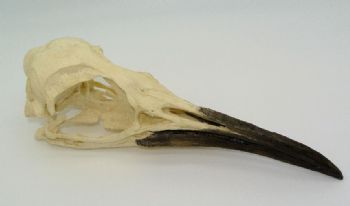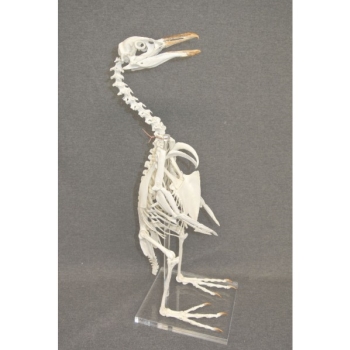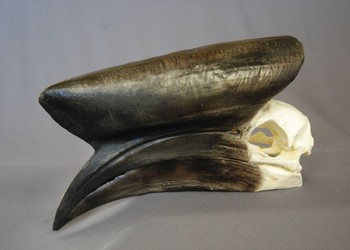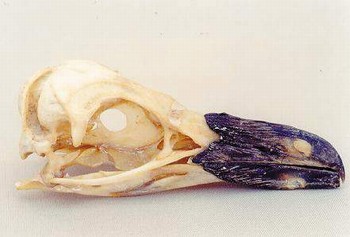King Penguin Skull Replica measures 8.2 inches. King Penguin Skull Replica is museum quality polyurethane cast. 2-part skull (separate cranium and jaw). Made in USA. Our precise skull can be used as a birdwatching teaching tool, museum bird skull exhibit, home décor bird skull, or office décor skull.
The king penguin or Aptenodytes patagonicus, reaching nearly 3 feet tall, is second only to the emperor penguin in size. The adult king penguins have black feathers on their back, white feathers on their chest and underside, and bright orange feathers on their ear patches and just below their throat.
Adults also display an orange teardrop-shaped patch on the lower part of the bill. Fully grown king penguins may reach 33 to 37 inches in length and weigh about 31 to 37 pounds, with males weighing slightly more than females.
The plumage of Aptenodytes patagonicus juveniles is similar to that of adults; however, many of their black feathers have gray tips, yellow feathers cover the ear patches, and grayish white feathers color the lower neck.
King penguin or Aptenodytes patagonicus chicks are covered with a thick down of dark brown feathers until they molt at 10 to 12 months of age.
This large flightless bird nests in colonies up to 10,000 individuals. The king penguin or Aptenodytes patagonicus feeds on krill, lantern fish, but their favorite is squid. Although king penguins eat squid and crustaceans, nearly all of their diet is made up of fish, especially lantern fish.
Barracudinas and snake mackerels are also consumed. Adults and juveniles Aptenodytes patagonicus are prey for leopard seals and killer whales, whereas skuas and snowy sheathbills prey upon eggs and chicks.
Most king penguin or Aptenodytes patagonicus populations breed twice in three years, with a few populations producing offspring once every other year.
Breeding occurs in dense colonies of thousands of individuals, usually along flat shoreline areas adjacent to the Southern Ocean.
A single egg is produced on a 14 to 18-month cycle, and the timing of an individual pair depends on the success or failure of the previous breeding attempt.











Reviews
There are no reviews yet.